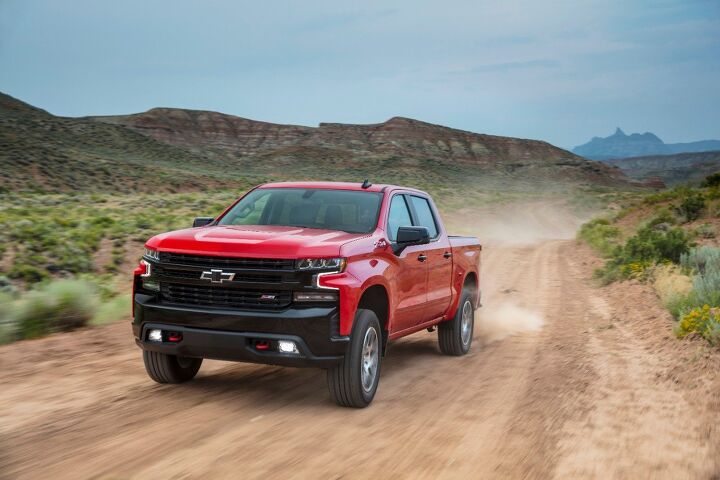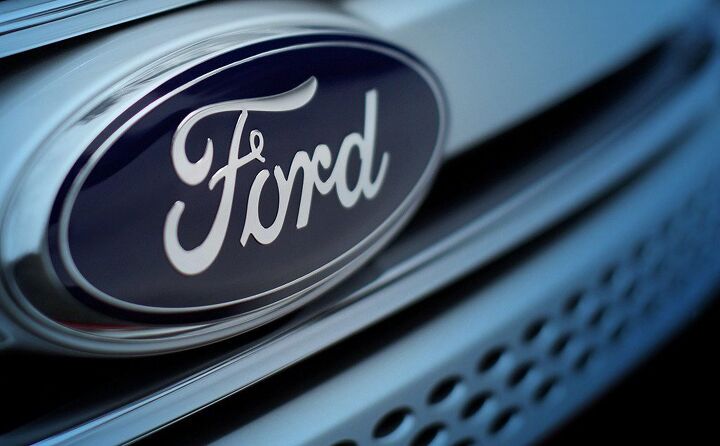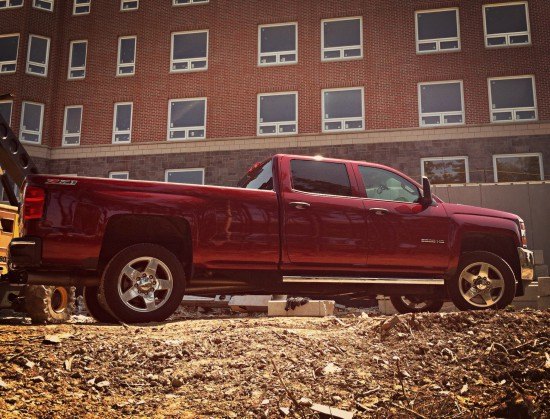#Decontenting
Report: Some Automakers Abandoning AM Radio
An acquaintance of mine recently said he would never purchase an all-electric vehicle and offered up a reason I never heard before. “They don’t come with AM radio,” he said.
While this surprised me, shifting technological preferences have indeed started to change how automobiles and broadcasters interact. As an example, a gaggle of Mazda owners found their vehicles stuck tuned to National Public Radio this February after a local station transmitted an FM data packet that effectively froze the cars’ infotainment system amid the swap to next-generation broadband services. That transition has already caused some interesting problems for the industry and electromagnetic interference has likewise become the default explanation for automakers limiting your frequency band choice in certain vehicles. But it doesn’t explain why some companies are ditching AM radio outright. In fact, a little research has shown a lot of the explanations given by manufacturers leave a lot to be desired.
Chip Shortage: GM to Remove Stop-Start Tech From Trucks
Despite hearing murmurings that the semiconductor shortage is about to turn a corner, General Motors has recently decided to begin manufacturing full-size pickups without the sometimes obnoxious automatic stop-start feature (intended to improve fuel economy) as a way to cut back on chip usage.
While this saves many the trouble of having to manually deactivate the system each time they return to the vehicle, some will undoubtedly miss having it. Those traversing the countryside or racking up highway miles during their daily commute have little to gain from the feature. But testing has revealed that city dwellers constantly exposed to stop-and-go traffic actually have an excellent shot at lowering their fuel bill. The vehicles GM has selected can do without start-stop technologies reflects this, though the compensation it’s offering remains laughable.
Stuck in Reverse? Tesla Abandons Radar, Restricts Features
Tesla is abandoning radar on its more affordable vehicles so it can deploy something that sounds like a vintage color motion picture process where the hues really manage to jump off the screen.
“ Tesla Vision” is the current process the company will use to collect and interpret the information necessary to operate semi-automated systems on the Model 3 and Model Y. But it feels like a step backward, if we’re being honest, and will result in cars that have “temporarily limited” abilities.
2022 Chevrolet Blazer: Fewer Engines, More Hues
The Chevrolet Blazer will be dumping its base engine for the 2022 model year. The naturally-aspirated, 2.5-liter motor always felt as though it would have been more at home in a vintage Plymouth Acclaim or original S-10 Blazer, however. Removing the 193-horsepower unit from the modern crossover, which can be optioned to weigh in excess of two tons, probably isn’t going to make anyone’s eyes well up.
In exchange, the manufacturer has seen fit to expand the color palette.
GM CEO Says Pandemic Helped Cut Costs; Decontenting Incoming
On Tuesday, General Motors CEO Mary Barra suggested her company would exit the other side of the coronavirus pandemic running much leaner than when it went in. While this will probably be the case for other automakers, as many (including General Motors) went into 2020 with restructuring efforts planned or already underway, GM is letting everyone know it’s doing cuts extra right.
This likely has to do with the automaker not wanting to look as though it’s in for a repeat of 2008, now that the global economy’s once again careening toward troubled times — but we’re just guessing. It also seems as though the extreme lack of industrial progress created by months of factory shutdowns has forced executives to fill the void with a lot of hot air. Fortunately, Barra’s message wasn’t totally devoid of useful information.
Honda Addresses Quality Control: Keep It Simple, Stupid
There was a time where you could ask just about anybody on the street which car brand they felt was the most reliable and they’d pause for a moment before answering — unsure as to whether they should suggest Toyota or Honda.
While the realities of what constitute a “reliable car” are a little more complicated than simple branding, both automakers deservedly made a name for themselves by undercutting and outlasting rival products coming from Detroit.
Times have changed. These days, you’ll usually see Toyota (and Lexus) sitting at the top of most reliability/quality surveys while Honda has settled uncomfortably to the middle of the pack. Perhaps more telling is the deluge of recalls that swept away some of the automaker’s credibility over the last five years. Honda is wisely blaming itself, allowing it to make the changes it believes are necessary to remedy the problem and regain some of its consistency.
Reductive Design: Ford's Secret Recipe for Affordable Cars?
Despite the average transaction price of your typical automobile climbing higher than ever before, there’s a lot of disagreement as to whether this actually amounts to more spending once inflation has been taken into account. Studies frequently show inflation-adjusted valuations climbing gradually over the years, resulting in MSRPs a few grand higher than what you might have spent in decades prior. Still, newer vehicles tend to have a much greater level of content and the ability to outlast something from 1970, helping to rationalize the difference. Data taken from the U.S. Bureau of Economic Analysis (BEA) actually suggests the average expenditure per vehicle actually peaked in the late 1990s before creeping back down.
Meanwhile, we keep hearing reports about the average transaction price of passenger vehicles settling above $37,000 for 2019. Cross referenced against the BEA data, that’s about $5,000 dearer than in 1999 — once you’ve shifted everything to present-day dollars. Blame people’s inability to say “no” to options, crossover popularity, or anything else you want. It won’t change the problem, especially as the wealth gap continues to widen between the haves and have nots.
Automakers know that sales are stagnating and Ford CEO Jim Hackett thinks he’s come up with a solution — and it’s a familiar one. It’s decontenting time.
GM Will Set Base Curb Weight For Its Truck Lineup
The next time you visit a Chevrolet or GMC showroom to check out a full-size or mid-size pickup, you may find the truck’s curb weight to be heavier than once advertised. That’s because General Motors has decided it will no longer remove items to make payload.
Chevy Decontents Key Models For 2011, Fans Not Amused
Given what it’s been through over the last several decades, GM is lucky to have any hard-core fans left at all. And yet sites like GMinsidenews.com [full disclosure: GMI is owned by TTAC’s parent company, Vertical Scope] have thrived as havens of near-unadulterated GM pride, bankruptcy and bailout notwithstanding. So when true-believer sites like GMI run works subtitled GM Annual Feature “Deletions” Continue: 2011 shows that not all of Old GM’s habits are dead–yet, TTAC sits up and takes notice (as soon as we come sniffing around and find it, anyway). The piece opens:
Just the other day, we posted the product changes for every 2011 General Motors product in the United States. This has become an annual feature on GMI, as it is always interesting to see what tweaks or screw-ups GM is adding to the next model year. The main problem we find in the annual model year changeis is the practice of removing content from products. After glancing at the 2011 stuff, I was surprised to see “New GM” continuing the trend of deleting content.’
To be fair, the 2011 changes show fewer content “deletions” than previous model years; however the fact that any content is being entirely deleted from a product is almost laughable considering GM’s dire attempt to win back U.S. customers. Perhaps other OEM’s delete features as well (trust me, they do), but they also don’t have a perception problem to deal with. GM, you’re building great products now…stop deleting content off of them every year.
Hammer Time: The Toyota Reality
A quarter century ago, give or take a year, my brother Paul became the first in the family to drive a Toyota. A 1984 Toyota Celica-Supra. It was a true shifting of gears for the Lang Gang. Everyone up to that time had bought a GM. Mom and Dad drove Cadillacs (only one saw 100k). The eldest one had a Monte Carlo (a.k.a. Crapo) that didn’t see the road half the time. Second in line had a Regal (a.k.a. the dying diesel) that ended up stolen and trashed in the Grand Canyon. He actually felt sorry for the Canyon. Within three years both these Roger Smith specials were replaced with 1988 Celica GT’s. Great cars with no nicknames necessary. Three years later I had a Celica GT-S sitting on my driveway. Even better. Still no nicknames. By the end of the decade everyone in the family had a Toyota. But then things changed…

























Recent Comments